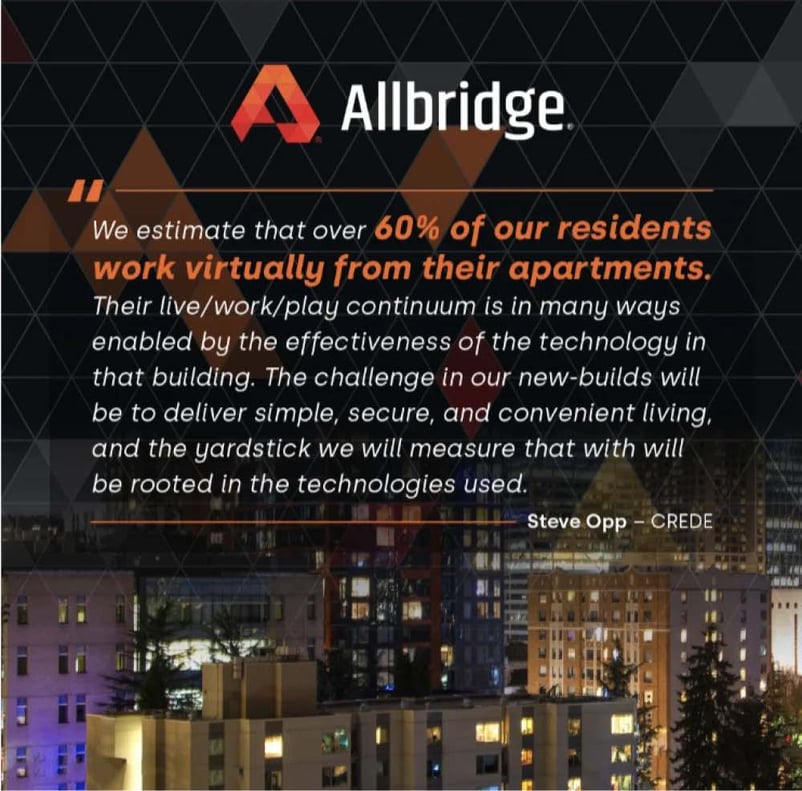
As a real estate and technology professional, when I had the opportunity to tour a brand-new multifamily apartment complex, I was excited to see the types of property technology,also called “proptech,” that the developer installed and what new tech would be available to the residents in this beautiful, well-constructed building. As I entered into a model unit, I was impressed with the FF&E (furniture, fixtures and equipment) finishes, the high quality, and the attention to detail of the unit layout. It was easy for me to envision the elevated experience anyone would encounter while calling this place home.
While I was walking the unit, I took note of a couple of must-haves.
Smart thermostatsAccess control (i.e., a door lock) could be opened with my mobile device
The large residential telecom carrier in that area was delivering Wi-Fi throughout the unit.
I started to depart the building with a fair bit of appreciation of what I had seen. But that's when I noticed in the hallway… WIREMOLD. It was as if a gold coin was dipped in silver paint. If you aren’t familiar with wiremold, it is a medium that is typically used in retrofits to disguise cabling that could not be installed beneath the drywall. While the use of wiremold can be fully legitimate for existing buildings, in a new build, it indicates that technology has been thought about “after the fact.”
This simple example points to a more significant problem that I see all too often.
Today’s residents are becoming more sophisticated about technology and what it can do for them. Convenience, Security, and Follow-Me Connectivity are fast becoming table-stake expectations, all of which are enabled by the technology installed. Additionally, smart-building tech also works for administrative, or “back of the house” effectiveness, and can significantly add to the property’s NOI.
The term evolve’ comes to mind for numerous owners/developers swimming upstream to keep up with all the technology demands. It’s not uncommon to find up to 20 different tech platforms in a modern multifamily new-build, with about half of those resident-facing. There’s also an increasingly essential requirement that these technologies be interoperable, as a catalyst to the various technologies and as a way to simplify the functionality for both the operator and the residents.
At Allbridge, we understand the importance of getting it right the first time. Delivering a distinctive and differentiated residence experience takes significant planning, and you need advanced and holistic IT design from the start of the design/build process.
This starts by establishing a vision of the end product. Let’s envision the experience you want residents and staff to have. Working backward from that point will allow you to construct a tech stack that works in concert to provide that experience. Another exceptional benefit of advanced IT planning is that it allows you to minimize the dangers of scope gap and unbudgeted expenses due to overlooked technologies (the kind that might require retrofitting and that wiremold I mentioned).
Using an experienced and proven partner such as Allbridge centers the design focus and deployment oversight for a complete technology punch list with one vendor, who have the elements in place to get it right the first time. Our team comprises trusted experts who cohesively work together in the designing, building, and supporting converged networks, with over 20 years of relevant experience.
The appetite for additional tech sought by the residential consumer continues to evolve. That evolution will require buildings with increasing levels of automation and convenience. With advanced planning and knowledgeable partners, you can develop a relevant and complete end product, delivered on time and at-budget.



